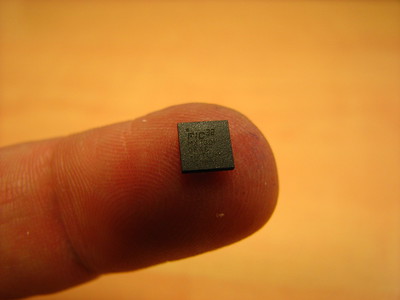Congress passed the bipartisan CHIPS Act, showing that both parties have less imagination than they have interest in subsidizing profitable companies.
Look around. How many chip-using devices can you spot? There’s the one you’re using to read this, of course, but chances are, there are more chips involved in modern life than you imagine, from smart refrigerators and wind turbines to sex toys and the chips that help identify lost pets.
Computer chips are not only ubiquitous, they’ve become a critical national security issue. Last Thursday, after months of negotiating, Congress passed the CHIPS and Science Act and handed it off for President Biden’s signature. The legislation fills the pockets of chip manufacturers with $52 billion in subsidies to encourage them to bring factories back to the United States, eventually shortening supply chains and, ideally, insuring a more plentiful domestic source of chips for consumer products and national defense over the next several years.
To understand why the government is paying chip manufacturers to come home, it’s worth considering why they went overseas in the first place.
Making them is difficult, exacting, and resource-intensive. The main ingredient, silicon, is derived from high-silica sand, which is hard to purify and refine. The manufacturing process also requires vast amounts of energy and water, both of which are becoming problematic. The world’s largest chipmaker, Taiwan Semiconductor Manufacturing Company, consumes about 5% of Taiwan’s total electricity output, and used 63 million tons of water across their facilities in 2019. While they were able to recycle some of the water, and conserved 3.6 million tons more than the year before, it’s hard to justify during a drought that caused Taiwan to forego irrigating 183,000 acres of farmland and cut off water supplies two days every week in some areas. With record dry conditions in the western United States, water restrictions might force a choice between chip manufacturing and growing food, too.

Chips also create a lot of waste. Intel’s facility in Ocotillo, Arizona, not only used 927 million gallons of fresh water in an area that will soon experience drastic restrictions, it also produced close to 15,000 tons of solid waste (60% of which is hazardous) in the first three months of 2021.
In short, manufacturers of semiconductor chips went offshore not only to take advantage of financial incentives offered by other governments, but because they also found a cheaper workforce and lax environmental laws. It was less expensive to relocate and build new $20 billion dollar factories in Asia than to stay here, pay American-level wages and clean up their own pollution.
The CHIPS and Science Act is not only a bribe (of sorts) to come back here with their vast carbon footprint, substantial water use and giant waste problem, while not even compelling them to build the kind of basic, “legacy” chips that broken supply chains have failed to deliver. It also supplies an additional $200 billion towards research and development in fields like artificial intelligence and fusion energy, which has been ten years away for at least the last 60 years. Perhaps this will yield untold and glorious innovations, but we’ve passed the point of diminishing returns on scientific investment, meaning that future breakthroughs will likely be more expensive for less rewarding outcomes.
It’s true that modern militaries depend on a steady supply of semiconductor chips, as evidenced by Russia’s desperate, sanction-necessitated reuse of dishwasher and refrigerator chips in their military equipment. That’s why relying on foreign, especially Chinese, manufacturers to supply the chips for American military equipment could get stupid quickly if our economic and political rivalry turns hot. Imagine, both countries standing astride piles of toxic manufacturing waste, lobbing chip-embedded smart bombs and unleashing yak-robots across the Pacific at each other and our thirsty, impoverished citizens. Is this the best we can do? Is this the hill we want to die on? Apparently it is.
The House passed the CHIPS act with a 243-187 vote, with the Senate following by 64-33, showing that if Democrats and Republicans can agree on anything, it’s that the future will be much like the past (with more gadgetry), and that profitable tech firms deserve our money more than veterans deserve health care (as one salient example). If ensuring a domestic supply of chips is a problem too big for the omnipotent, invisible hand of the free market to solve, maybe we should simply straight-up nationalize the industry. That way, we might one day realize a useful return on our investment.
Related: The Sand Shortage, and Why It Matters


Join the conversation!